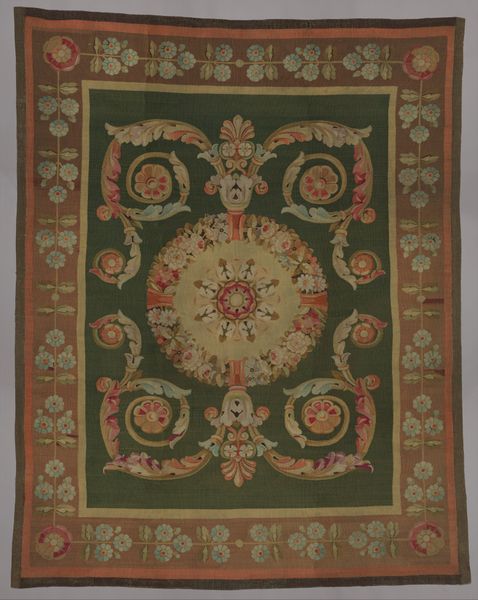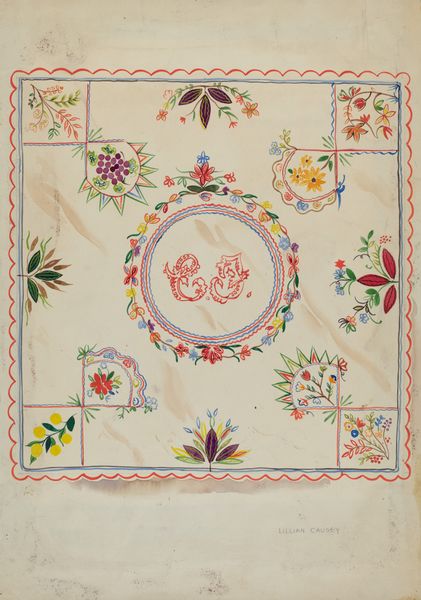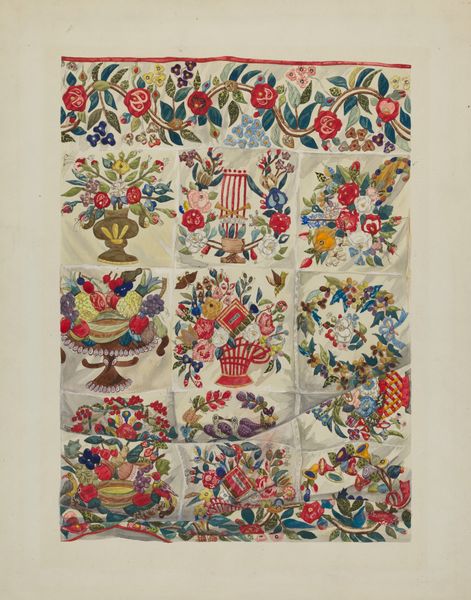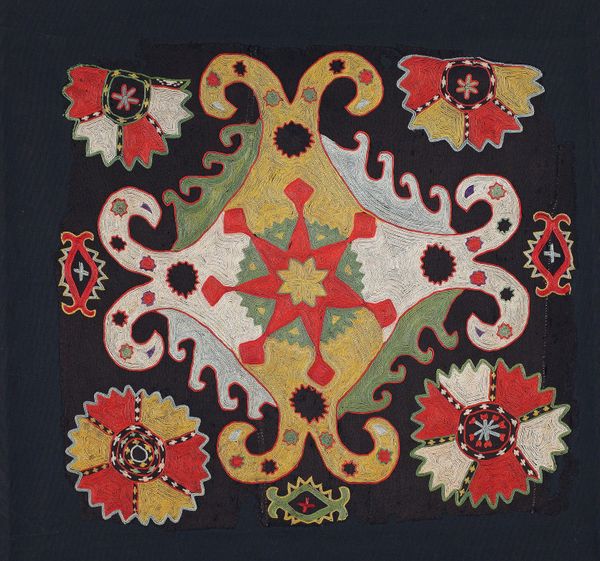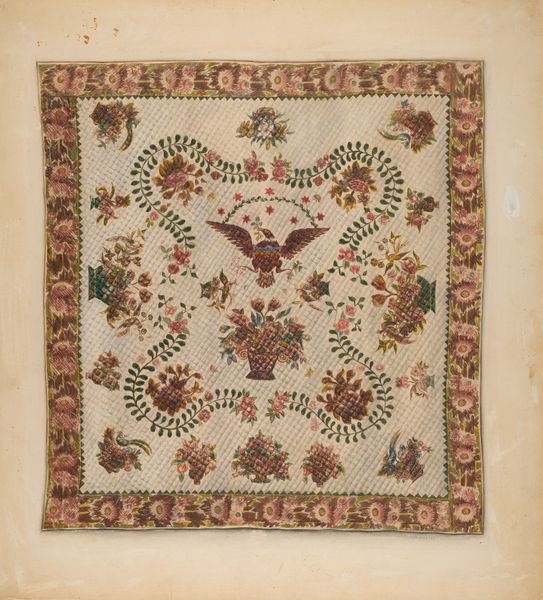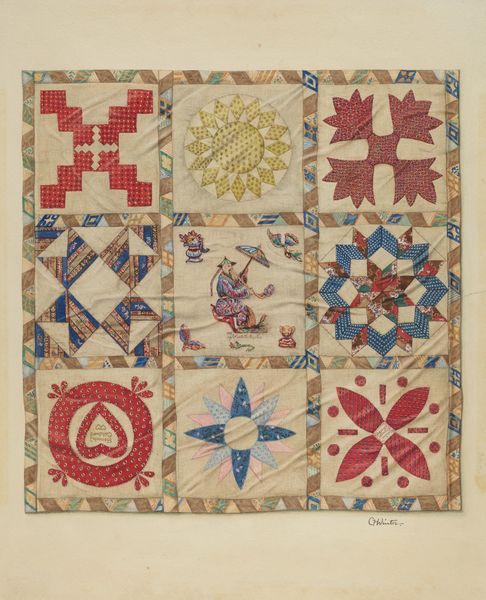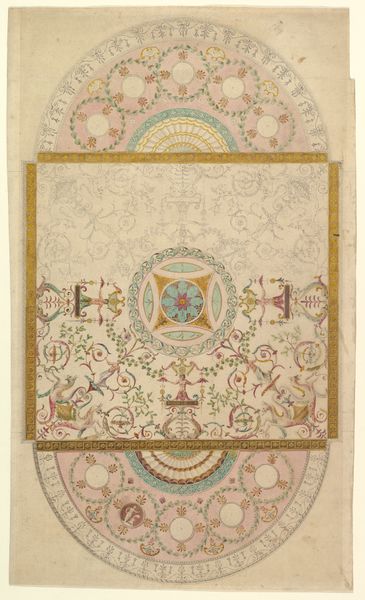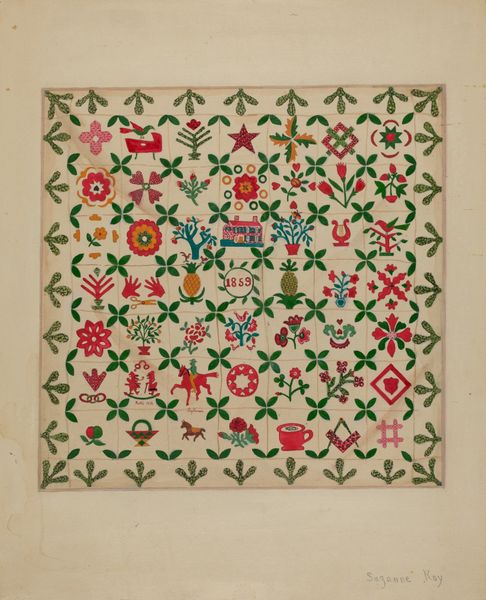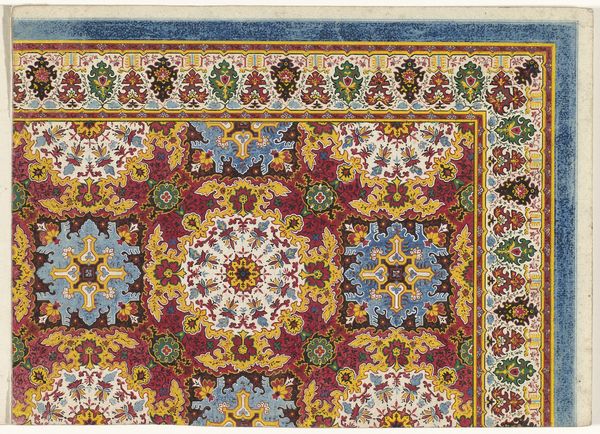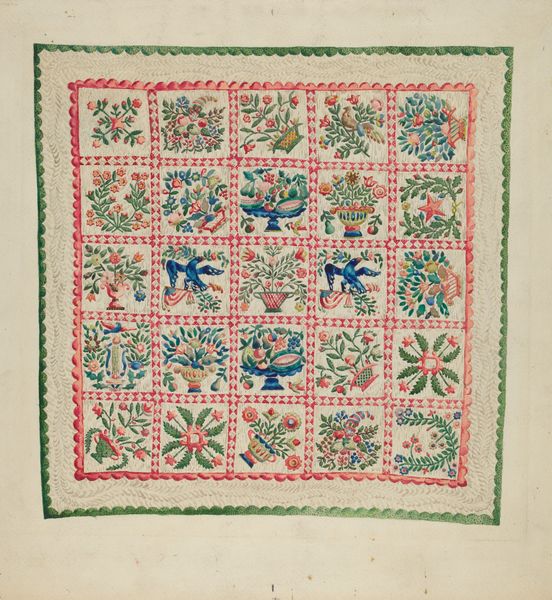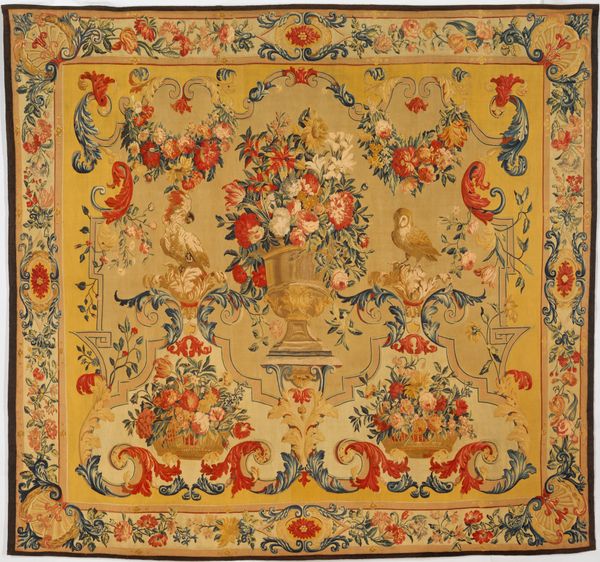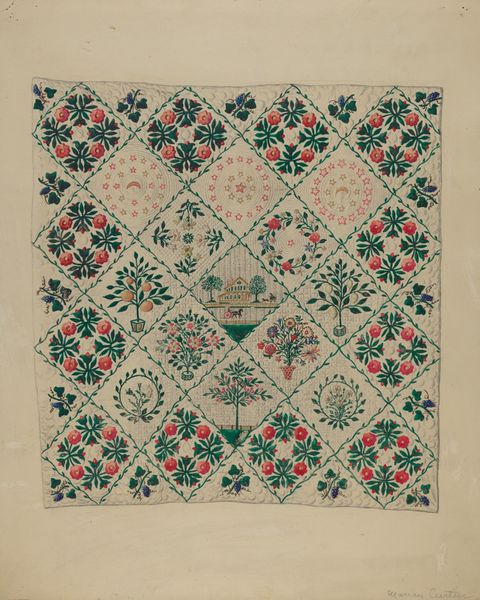
fibre-art, textile
#
fibre-art
#
folk-art
#
textile
#
geometric pattern
#
folk-art
Dimensions: 106 1/4 x 103 3/4 in. (269.9 x 263.5 cm)
Copyright: Public Domain
Editor: Here we have "Quilt, Presentation pattern," created between 1846 and 1849, and currently held at the Metropolitan Museum of Art. Made by Mary Hergenroder Simon, it’s an incredibly intricate fiber art piece, almost overwhelming in its detail. What can you tell me about how its purpose affects its form? Curator: Considering this is a “Presentation Pattern” quilt, it was very likely created within a specific social context. Think about the roles women held in the mid-19th century. Quilting was often a communal activity but could also represent an individual’s skill, patience, and artistic expression within prescribed social norms. Presentation quilts like this often marked significant life events, such as marriages or departures. Editor: So it's about showing off both craft and virtue? Curator: Exactly. Quilts served a utilitarian function, of course, but elaborate presentation quilts also functioned as a display of domestic accomplishment and social connection. The meticulous geometric and floral patterns suggest leisure time and mastery of needlework. But consider, too, whose stories *aren’t* being told in the visual language of flowers and wreaths. The very act of displaying this reinforces prevailing ideas of feminine achievement. Editor: I guess I was just seeing pretty flowers, not the power structures underneath. It is almost like a Victorian resume. I’ll never look at a quilt the same way. Curator: And how does thinking of this quilt as a document of its time, tied up with social expectation and gender roles, influence your view? Editor: It changes everything! It feels far more complex, like decoding a message about society and womanhood in the 1840s, using floral patterns. It’s pretty revolutionary, in its quiet way.
Comments
No comments
Be the first to comment and join the conversation on the ultimate creative platform.
